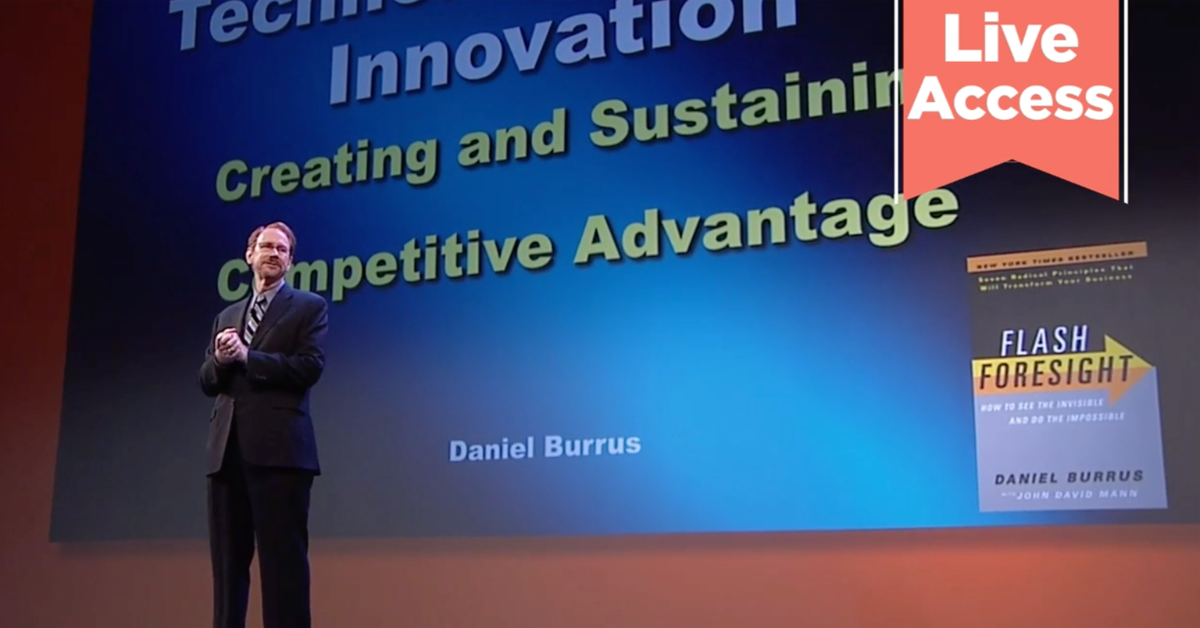The future is uncertain and no one is able to predict it . . . right?
Then how do some businesses find significance in their industries, succeed, and adapt to a changing and disruptive world? Moreover, why do some others fall completely flat in this task and nearly lose everything? How do you as a business leader ensure that your company is one that prospers and grows?
Over the decades that I have researched industry and worldwide disruptions caused by digital technology and other transformations, I have found something notable. There are key principles that those aforementioned successful and significant businesses employ to ensure they are charging ahead of their competition in the ever-changing landscape in front of them.
These principles can be applied to every industry and every business model as a way to transform an organization and chart its path to future significance. Today, I want to explore some iconic examples of business, organizations, and industry leaders who have implemented my Anticipatory principles, all of which are in different industries.
Focus on Certainty (My Hard Trend Methodology)
As I share my Anticipatory Organization® Model with organizations, Hard Trends are those that you are certain will happen while Soft Trends are those that are not only future possibilities, they are ones you can influence directly!
The key is to always start with your focus being on the Hard Trend future certainties and shape your business decisions around those, especially in times of uncertainty.
Another way to think of this is that by businesses anticipating the Hard Trends, they disrupt themselves, and, in doing so, they avoid being disrupted by outside influences they are not prepared to compete with, such as new technology or a competitor, by creating disruption from the inside out.

One example of an innovative company that used Hard Trends to disrupt their own business model and, as such, changed their industry forever is Netflix. Netflix was a pioneer in the movie rental business with direct-to-home shipping of DVDs, but they further altered the cinema and entertainment industry by observing the Hard Trend of increasing internet usage and high connectivity of it.
The simultaneous decrease in DVD popularity would undoubtedly leave Netflix’s main business model completely irrelevant. They identified this potential disruption, chose to leverage it themselves, avoided disruption, and used the increasing internet capability to create on-demand streaming entertainment, transforming everything!
Create Transformation by Thinking Exponentially
Change is constant, but to stay ahead of the competition, businesses do not need to change. They need to transform both themselves and the industry. Transformation is a way of completely altering how something is or the way something is done.
Do not accept that the way things are is the way they must be—instead, think exponentially! Leverage new or existing ideas, technology, or concepts in new ways that blaze a completely new trail for your business and your industry.

Let’s take Under Armour and artificially intelligent software, for example. These two unlikely entities have come together in an exponential way recently! Many brands use A.I. apps for product innovation, but Under Armour took it a different direction. The athletic wear brand employed A.I. technology during NYC Fashion Week to identify New York customers who were the least dressed up. Using that data, they gave those individuals a free pair of Under Armour shoes.
Instead of using A.I. as the product itself, Under Armour instead leveraged the technology exponentially to orient themselves closer to the customer, transforming how A.I. and sales work together in the tactile retail world.
Face Problems by Skipping Over the Wrong Ones
I implore many of my clients to think about what problems their business is currently facing. Is it an employee shortage? Does it seem like a shortage of funds? Is your service too expensive? Identify the problem you are facing . . . and discard it.
Yes, you heard me right: discard, or skip, this problem, as more likely than not, it is not the real problem.
With my Skip It Principle, I encourage business owners and C-suite executives to appreciate that the perceived problems at their business are not the real root of their issues. The problem they identify is merely the most obvious, but by focusing on this, they are not getting down to the core issue that will lead to an opportunity by solving.

One notable company that implemented my Skip It Principle to their advantage was Uber. Many travelers were concerned with the cost of taxis, but Uber determined that this wasn’t the actual issue these customers were facing.
Uber found that the consumer headache was not actually in the cost but in the difficulty of flagging down taxis. This root problem that Uber identified led them to create a rideshare app that let users call rides directly from their phones.
Redefine and Reinvent with Anticipation
Change at any business or organization does not always mean small, menial changes, such as a new hire or a new software program. Instead, look for large, transformative changes that redefine and reinvent your business or organization.
Each of the principles listed here are iconic pieces to my Anticipatory Organization® Learning System that can help you as a business or organization redefine and reinvent your industry and the world. Whether you leverage Hard Trends, think exponentially, skip perceived problems, or go completely opposite to what you are used to, all of these efforts are proven to lead to industry significance.






